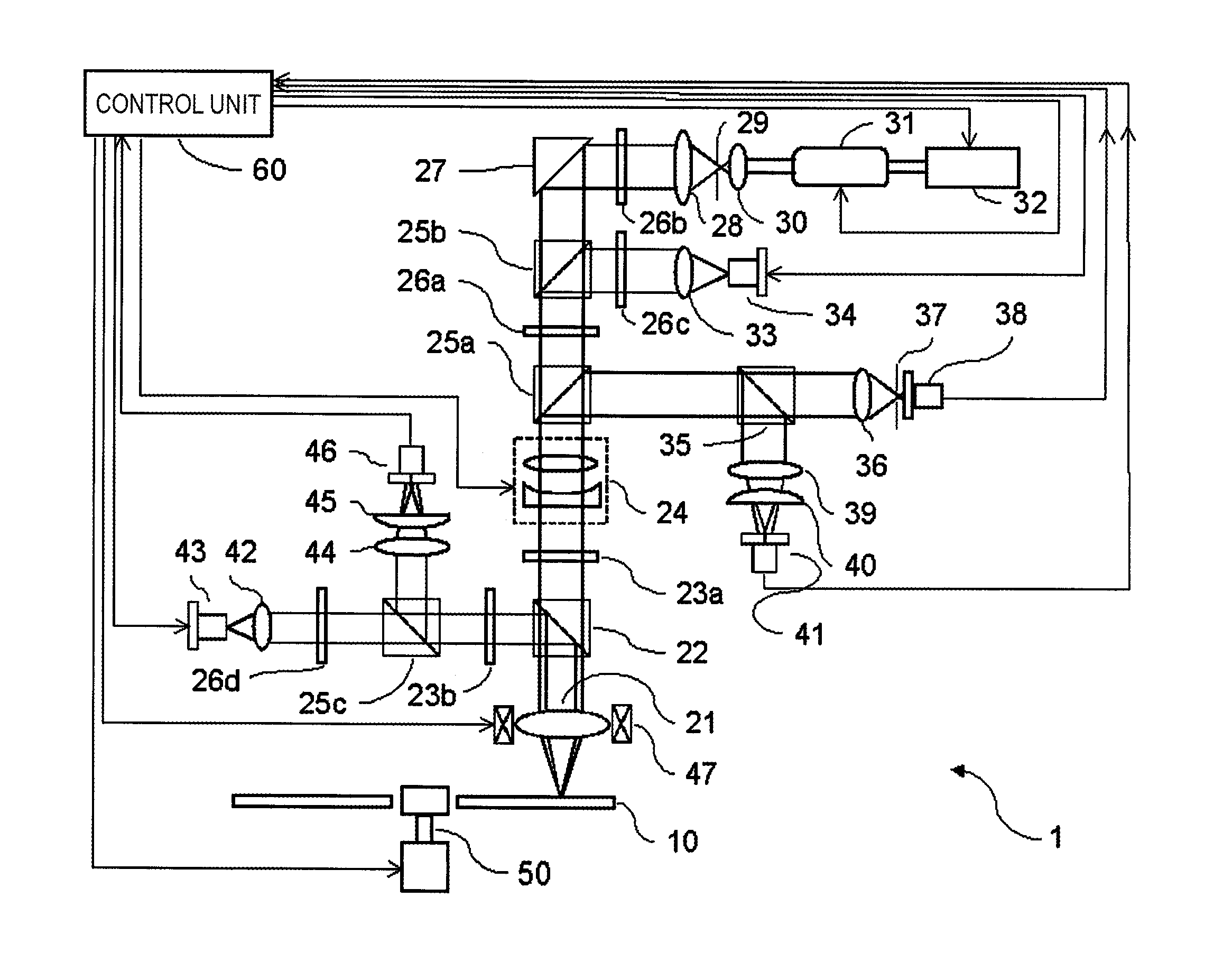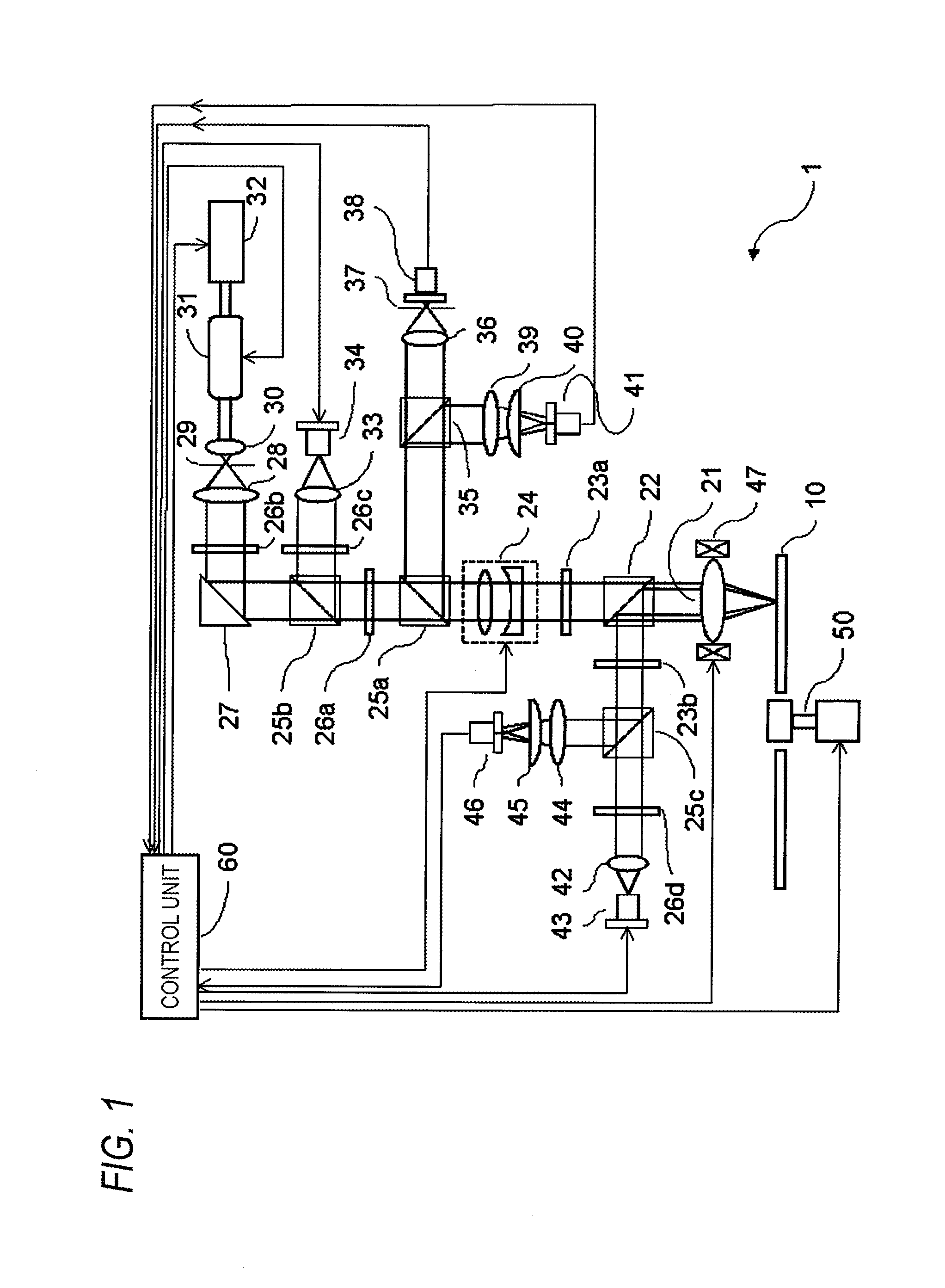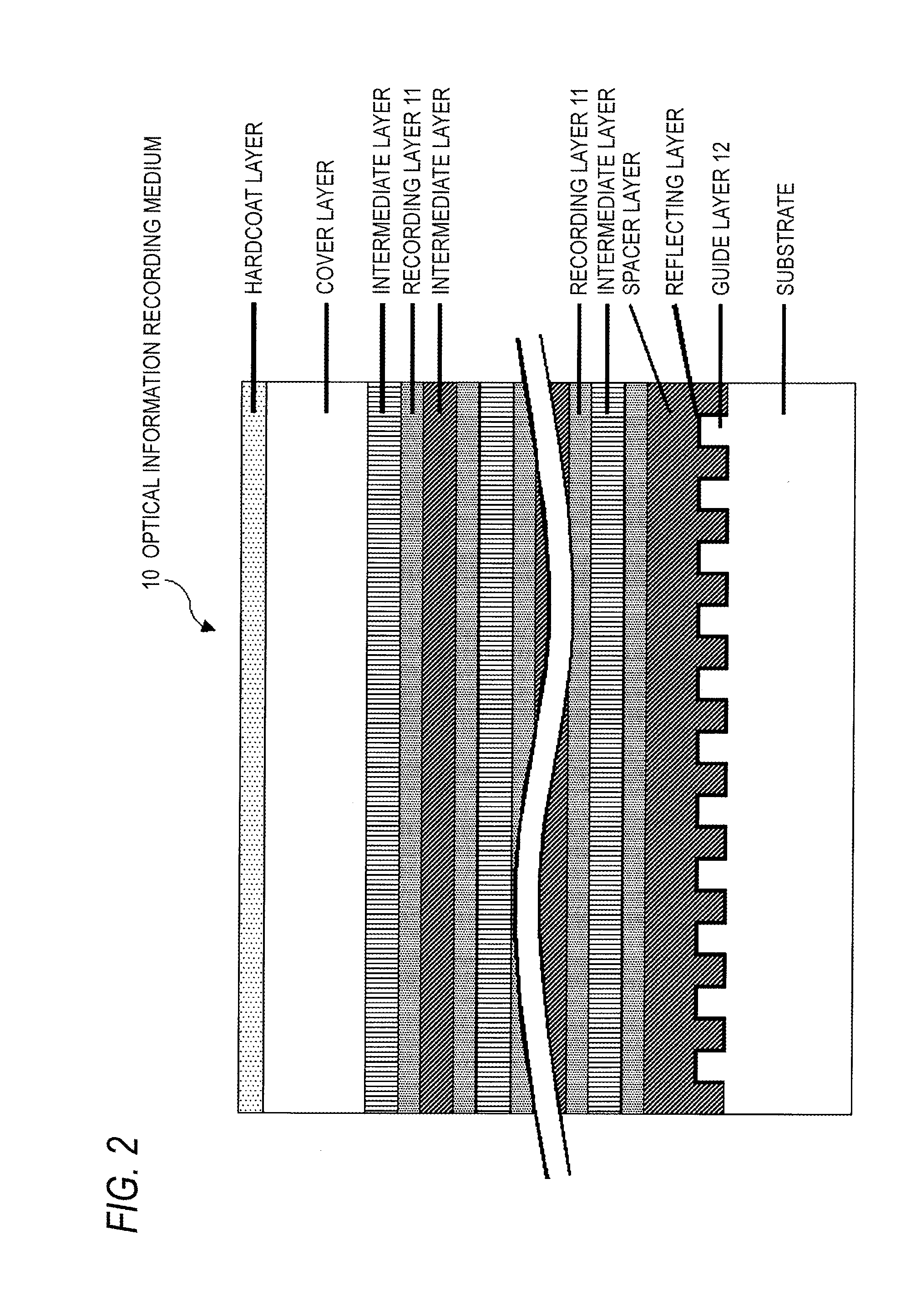Non-resonant two-photon absorption recording material, non-resonant polymer two-photon absorption optical information recording medium, and recording/reproducing method
a two-photon absorption and recording material technology, applied in the field of non-resonant two-photon absorption recording materials and non-resonant two-photon absorption compounds, can solve the problems of difficult so-called molecular design so as to optimize the desired non-linear optical characteristics or various properties necessary for the production of devices, and achieve the effect of high humidity/heat resistance after recording
- Summary
- Abstract
- Description
- Claims
- Application Information
AI Technical Summary
Benefits of technology
Problems solved by technology
Method used
Image
Examples
example 1
Synthesis Method of Compound D-1
[0256]Compound D-1 was synthesized by the following method.
[0257]27.0 g (250 mmol): of anisole and 42.9 g (200 mmol) of 4-bromobenzoyl chloride were dissolved in 500 ml of methylene Chloride, and after cooling to an internal temperature of 5° C., 33.4 g (250 mmol) of aluminum chloride were added in 6 parts, followed by stirring for 8 hours in a nitrogen atmosphere. The reaction solution was poured in water, then extracted with methylene chloride, and evaporated to dryness in a rotary evaporator to quantitatively obtain white Compound 2. Compound 1 obtained was confirmed to be the target product by 1H NMR.
[0258]140 ml of hydrobromic acid and 220 ml of acetic acid were added to 35.0 g (120 mmol) of Raw Material Compound 1, and the mixture was stirred at an internal temperature of 110° C. for 12 hours and a half. After allowing to cool to room temperature, the reaction solution was poured in water and stirred at room temperature for 20 minutes. The preci...
example 2
Synthesis of Comparative Compound R-1
[0266]
[0267]Compound R-1 was synthesized by the following method.
[0268]6.98 g (37 mmol) of p-trifluoromethylphenylboronic acid, 9.92 g (33 mmol) 5-bromo-2-iodotoluene and 10.6 g (100 mmol) of sodium carbonate were dissolved in 190 ml of ethylene glycol dimethyl ether-distilled water mixed solvent (14:5), and 0.37 g (1.7 mmol) of palladium acetate and 0.88 g (3.3 mmol) of triphenylphosphine were added thereto. The system was heated for 7 hours in a nitrogen flow, and the reaction solution was allowed to cool and extracted by adding distilled water and about 600 ml of ethyl acetate. The aqueous layer was removed to separate the organic layer, and this organic phase was dried over magnesium sulfate. The filtrate after separating magnesium sulfate by filtration was evaporated to dryness in a rotary evaporator and purified on a silica gel column (ethyl acetate:hexane=1:400) to obtain 10.1 g (yield: 96%) of white Raw Material Compound 7. Compound 7 obt...
example 3
Synthesis Method of Compound D-21
[0279]Compound D-21 was synthesized by the following method.
[0280]9.74 g (35.1 mmol) of Raw Material Compound 2 was dissolved in 70 ml of tetrahydrofuran and after adding 7.10 g (70.2 mmol) of triethylamine, the mixture was cooled to an internal temperature of 5° C. Thereafter, the system was stirred for 2 hours in a nitrogen atmosphere while adding dropwise 3.18 g (35.1 mmol) of methacrylic acid chloride. The reaction solution was poured in water and stirred at room temperature for 20 minutes. The precipitate deposited was separated by filtration and dried at room temperature to quantitatively obtain white Compound 9. Compound 9 obtained was confirmed to be the target product by 1H NMR.
[0281]170 ml of toluene and 20 ml of water were added to 14.2 g (42.9 mmol) of Raw Material Compound 9, 18.6 g (51.5 mmol) of raw material Compound 5, 2.48 g (2.15 mmol) of tetrakistriphenylphosphine palladium, 17.8 g (129 mmol) of potassium carbonate and 1 mg of dibu...
PUM
| Property | Measurement | Unit |
|---|---|---|
| Thickness | aaaaa | aaaaa |
| Thickness | aaaaa | aaaaa |
| Thickness | aaaaa | aaaaa |
Abstract
Description
Claims
Application Information
 Login to View More
Login to View More - R&D
- Intellectual Property
- Life Sciences
- Materials
- Tech Scout
- Unparalleled Data Quality
- Higher Quality Content
- 60% Fewer Hallucinations
Browse by: Latest US Patents, China's latest patents, Technical Efficacy Thesaurus, Application Domain, Technology Topic, Popular Technical Reports.
© 2025 PatSnap. All rights reserved.Legal|Privacy policy|Modern Slavery Act Transparency Statement|Sitemap|About US| Contact US: help@patsnap.com



